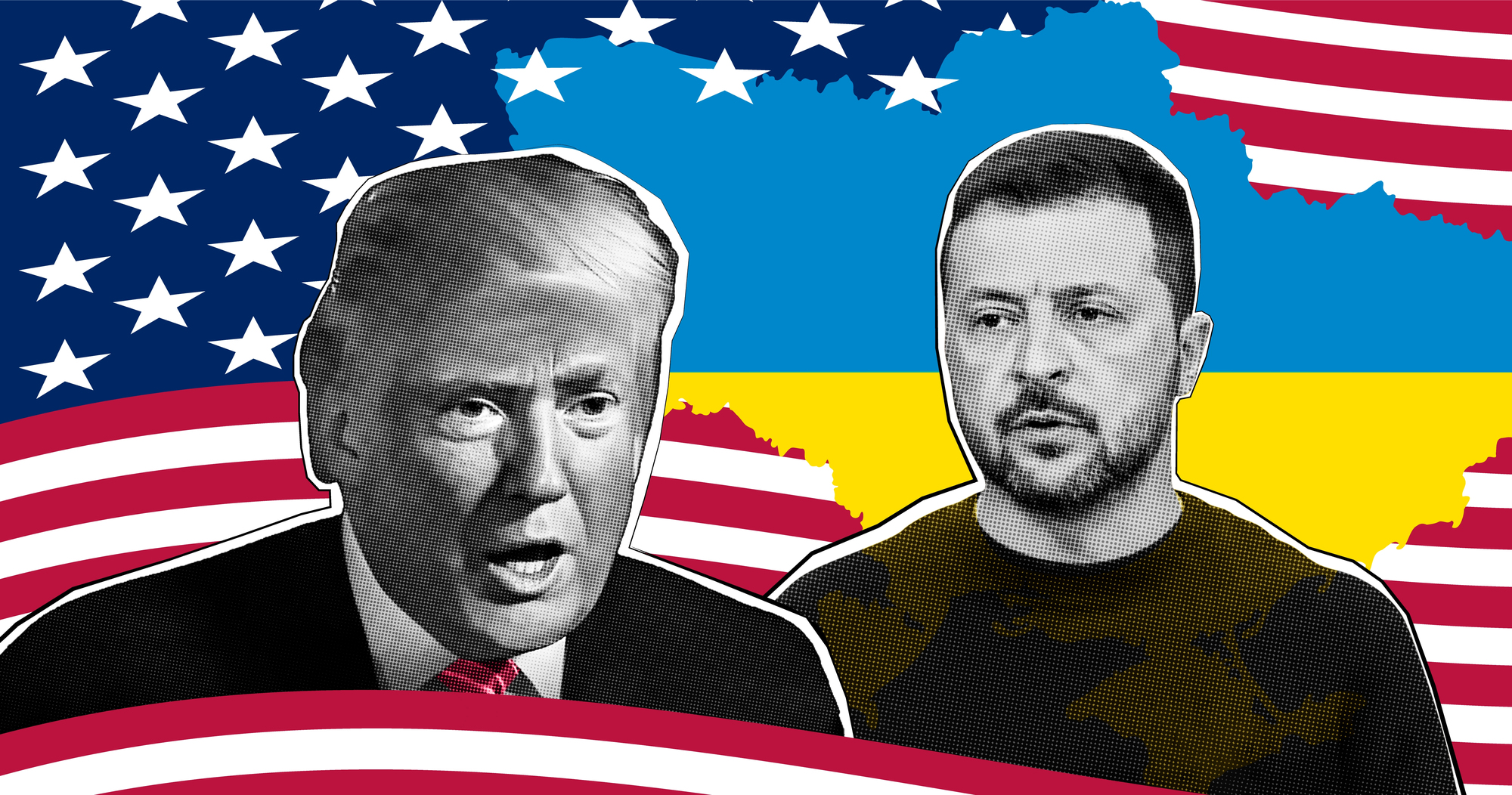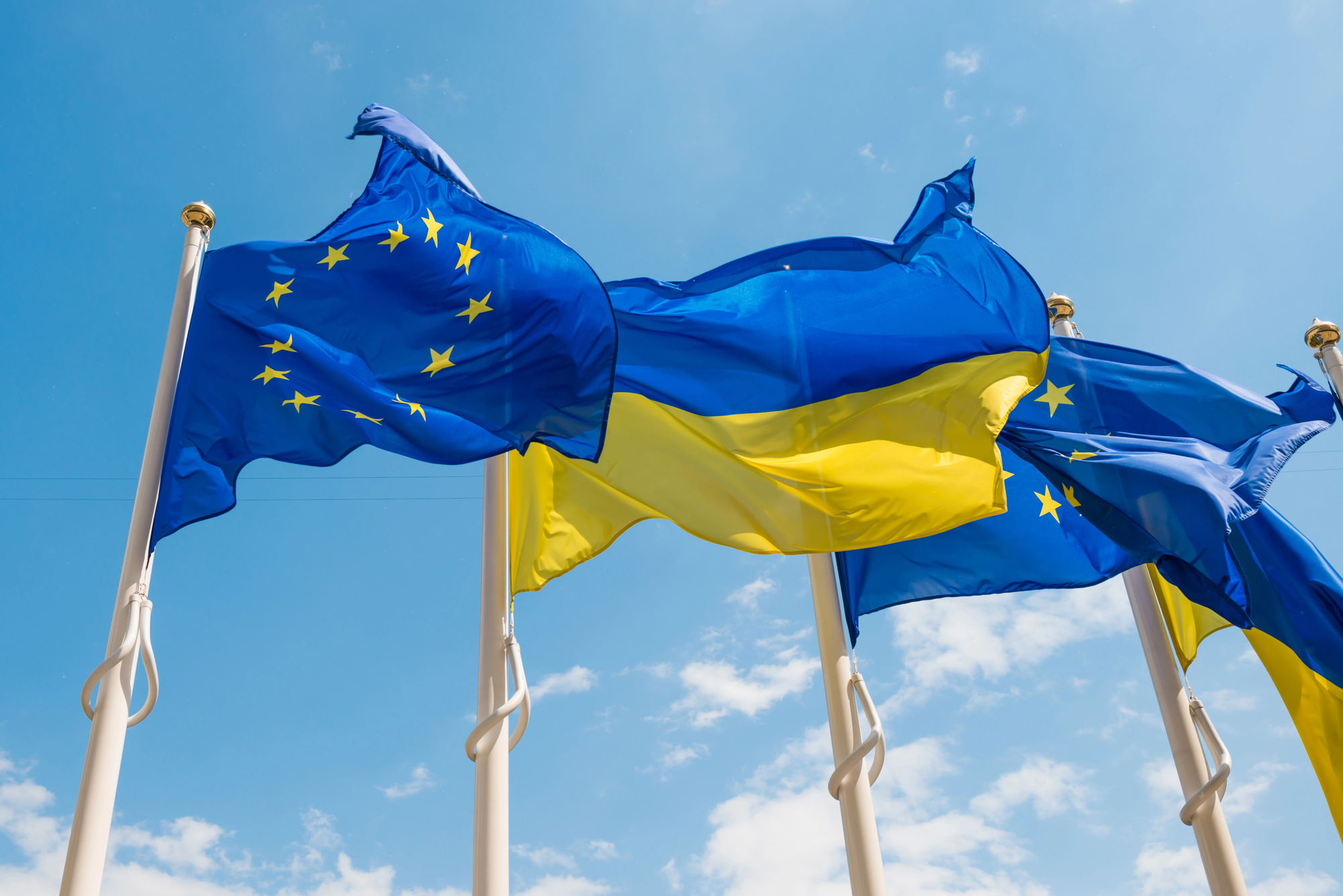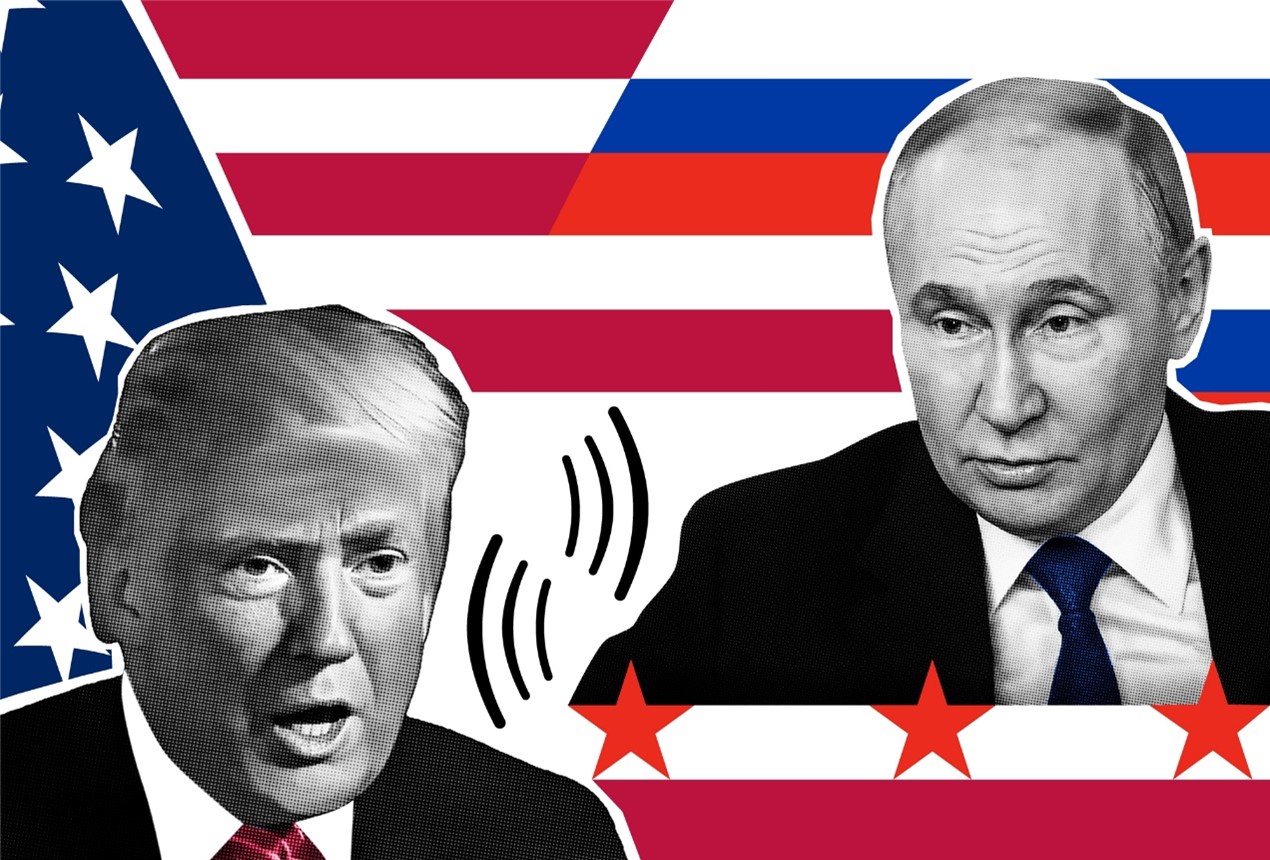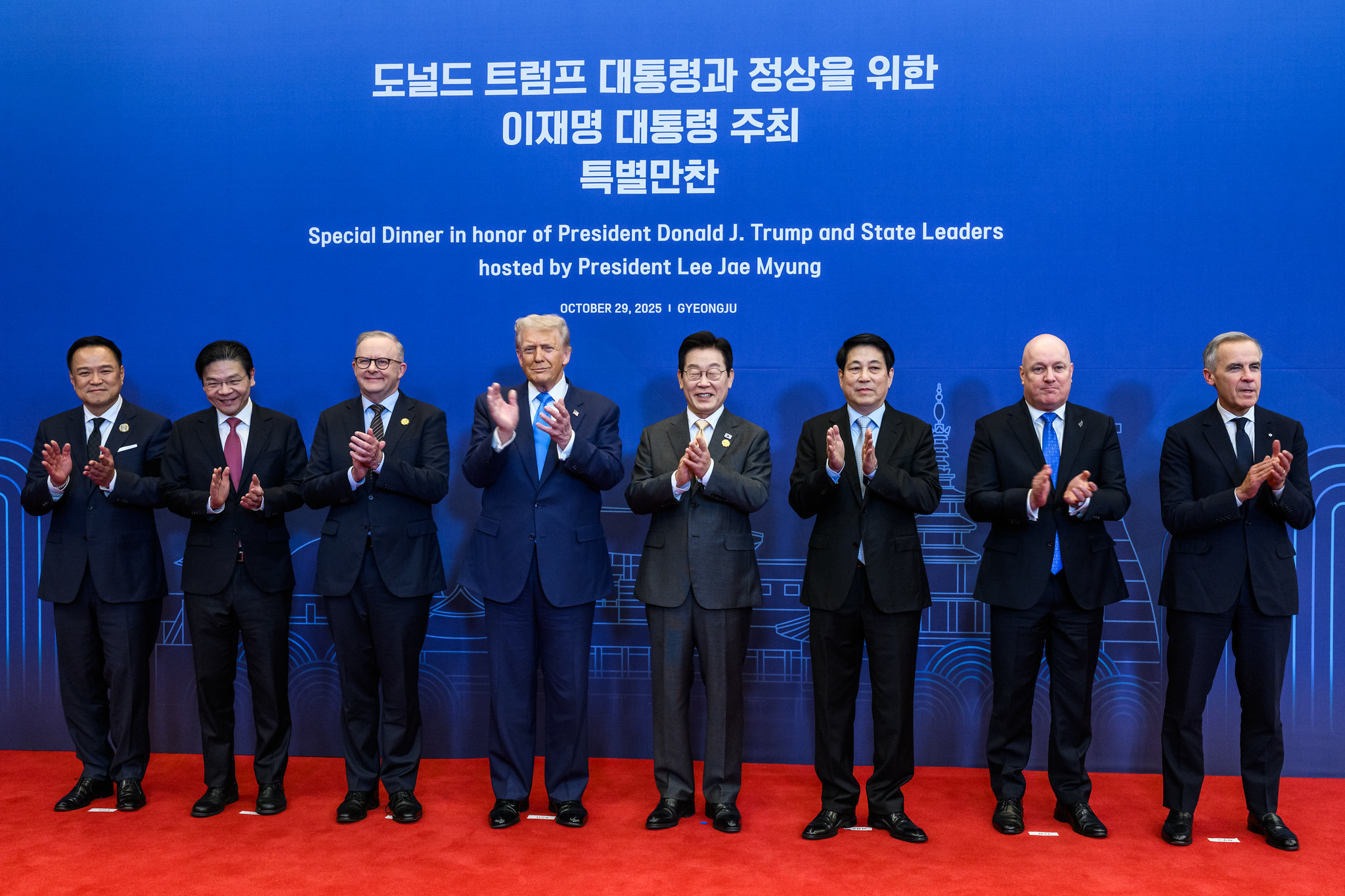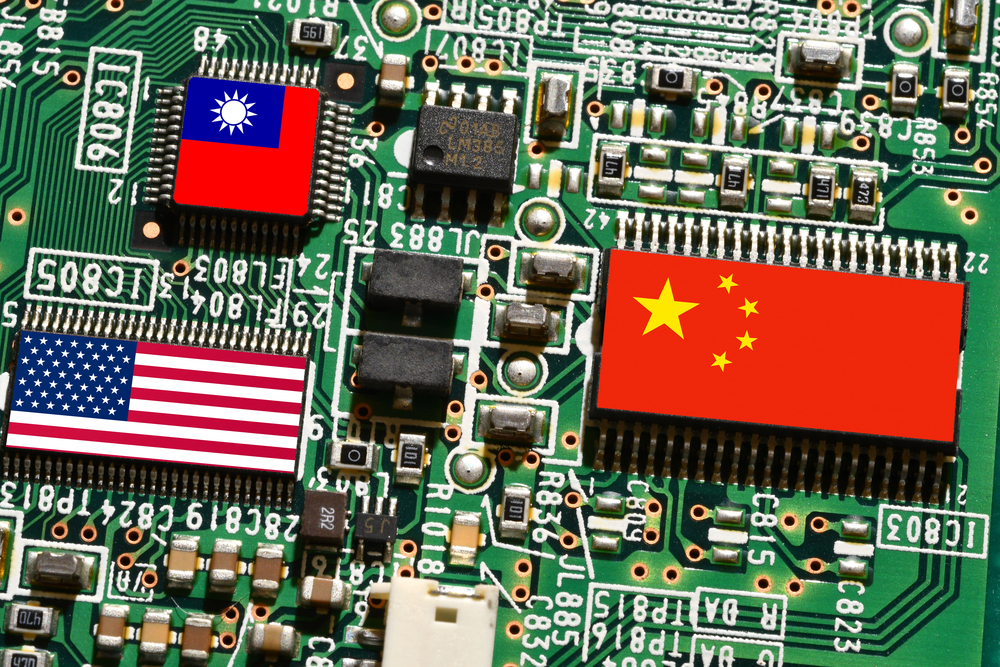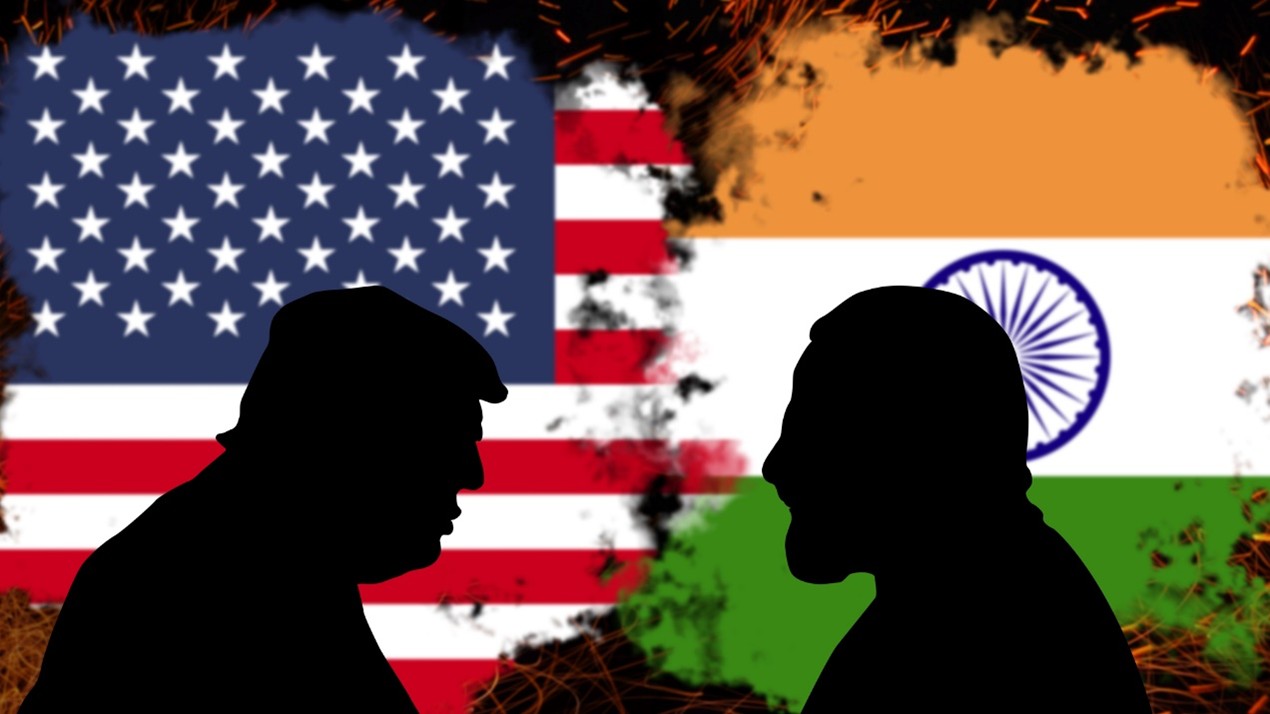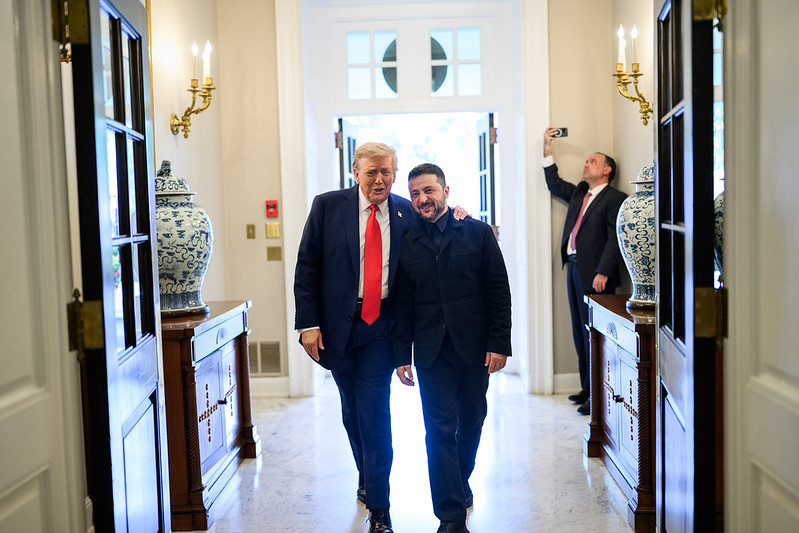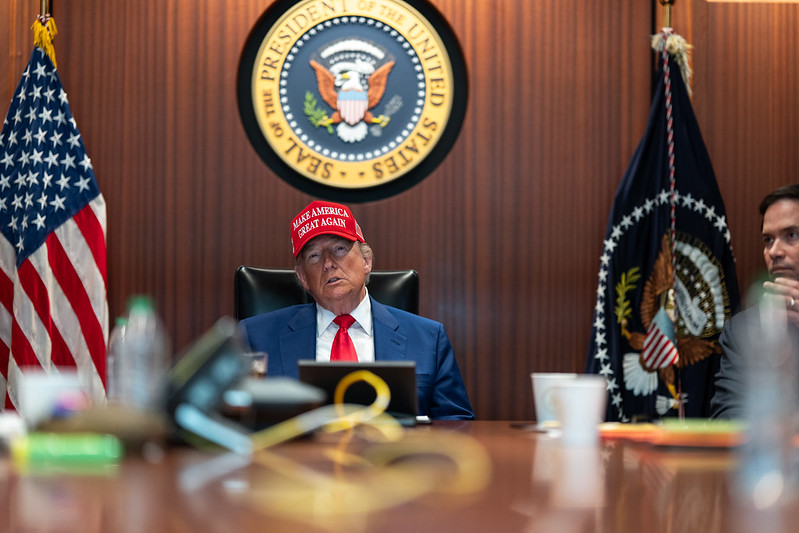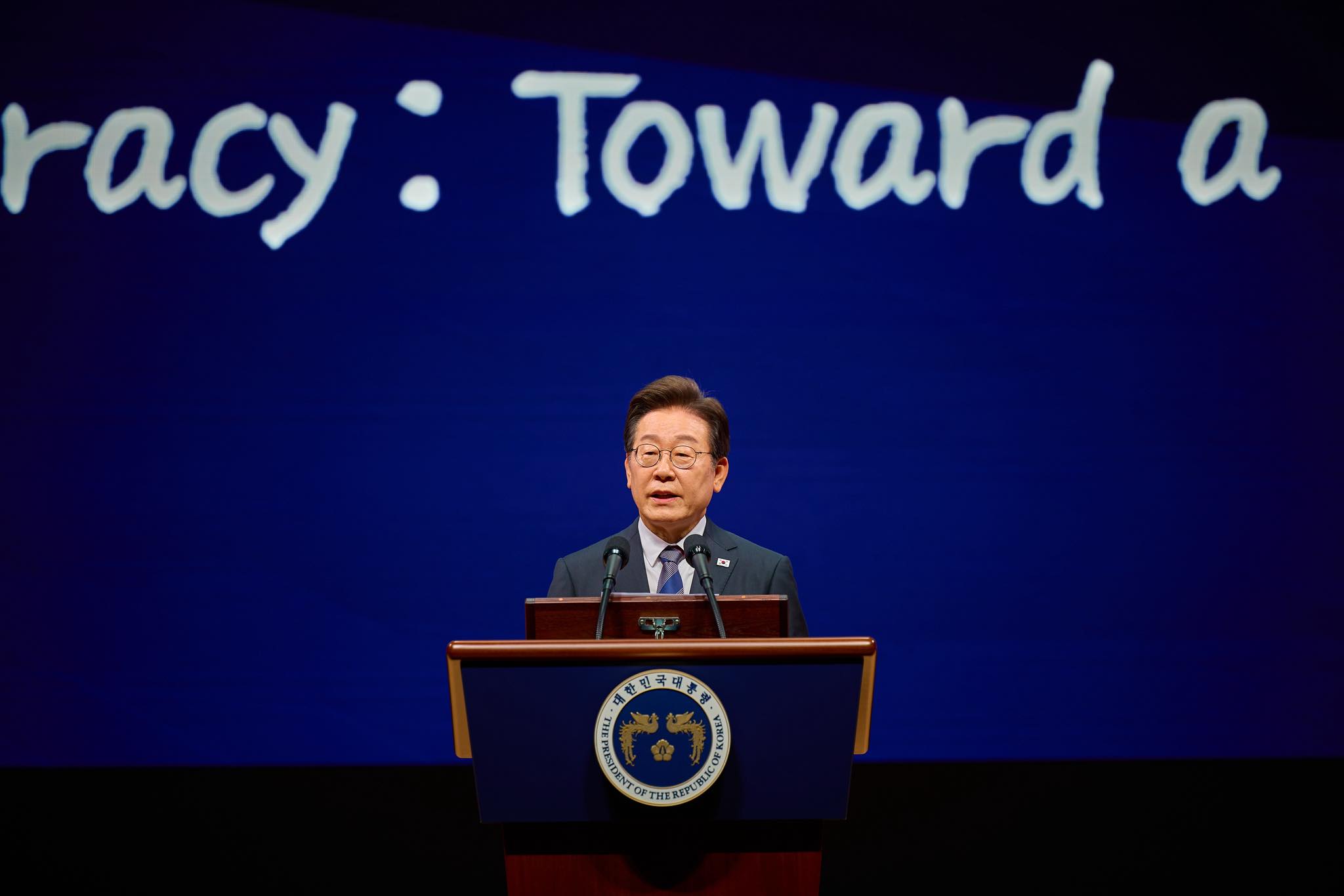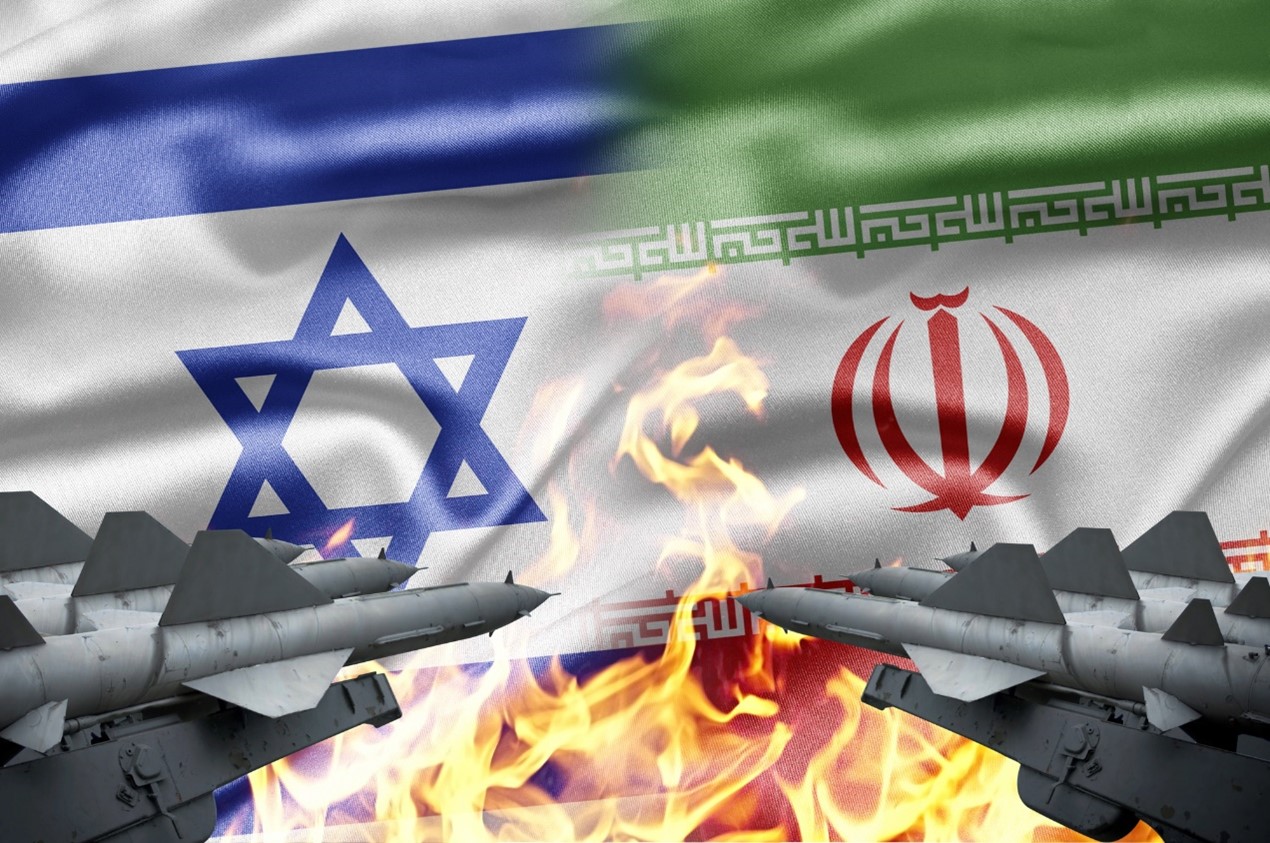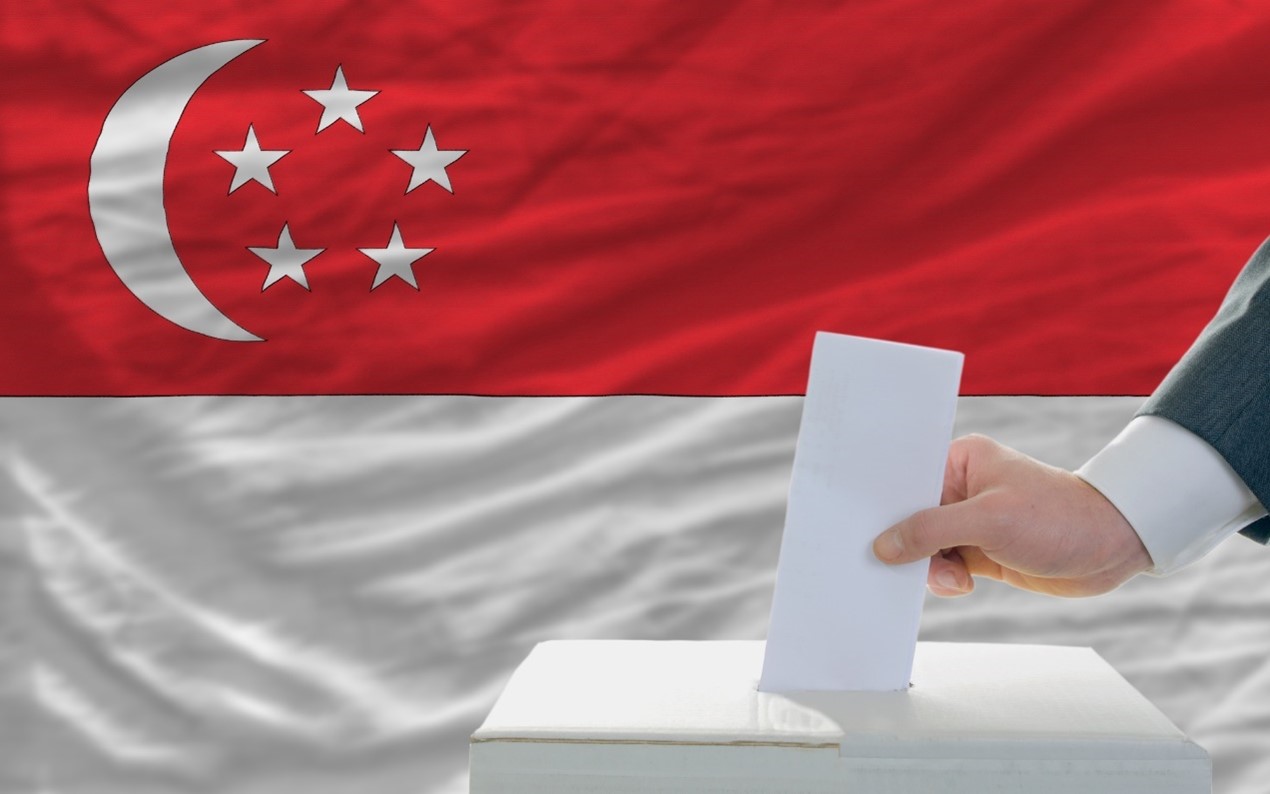Despite Ukraine’s openness to dialogue (including an unconditional 30-day ceasefire), Moscow continued military operations and airstrikes against Ukrainian civilians, using rhetoric about the need to address the “root causes of the conflict.” However, the root cause is clear: the Russian invasion and occupation of Ukrainian territories that began in 2014. Picture source: Depositphotos.
Prospects & Perspectives No. 29
No More Carrots: U.S. Leverage Needed to End Russia’s War
By Sergiy Solodkyy
Ukraine believes that the time has come for U.S. President Donald Trump to put pressure on Russia, as it has unequivocally demonstrated its unwillingness to end the war. Meanwhile, U.S.-Ukraine relations are going through a prolonged period of profound uncertainty. Ukraine seeks to maintain a friendly dialogue and strategic partnership with the United States, recognizing that Washington’s support plays a crucial role in deterring Russian aggression. However, the shift in rhetoric and the suspension of several aid initiatives to Ukraine suggest a growing distance between Kyiv and Washington. In more than 100 days of Donald Trump’s presidency, there has been no announcement of additional military support for Ukraine. Still, Ukrainians continue to believe that, in time, the United States will return to active engagement with its long-standing partner.
Fragile Support: Strategic Partnership Under Threat
A year ago, two opposing views could be heard in Ukraine regarding the course of events following Trump’s return to the White House. One camp of observers assumed that the unpredictable nature of the politician could bring new momentum to the policy of deterring Russia. His critical stance toward Joe Biden’s weak approach resonated to some extent with Ukrainian assessments over the previous administration’s restrained “escalation management” strategy. In Kyiv, it was believed that such caution contributed to prolonging the war by allowing Russia to regroup and prepare for a war of attrition against Ukraine.
The second camp, by contrast, was convinced that Trump would remain influenced by old grudges. Ukraine had inadvertently drawn into a scandal during Trump’s first term that led to impeachment threat. Moreover, the Republican Party had notably blocked an aid package to Ukraine during the election campaign, sending another worrying signal about the potential rollback of U.S. support in case of a Trump return.
In either case, both perspectives shared two key observations. First: a shift in the U.S. approach to Ukraine under Trump was inevitable. Second: Ukraine needed to exert maximum effort to ensure that this shift was not for the worse. It was widely understood that the first months of a new presidency would be crucial for the incoming leader to become fully informed and grasp the complexities of the situation — and during that time, it was vital for him to hear Ukraine’s arguments and those of its allies, rather than the voices of Kremlin manipulative propaganda.
Emotions Couldn’t Be Avoided
The Ukrainian government appeared to build its U.S. policy on several strategic principles:
- No Emotions. From the very beginning, Ukraine intended to stay out of loud public disputes with the U.S., knowing that doing so could jeopardize essential American aid. Kyiv chose a calm and measured tone in dialogue with its strategic partner to avoid unnecessary harm. The public dispute between the Ukrainian and U.S. presidents on February 28, 2025, at the White House only reinforced the belief among Ukrainian policymakers that overt disagreements with the new administration could be counterproductive. Ukraine chose to defend its interests quietly, at times without employing public diplomacy. A vivid example of this cautious approach was the February 2025 UN General Assembly vote, where the U.S. sought alignment with Russia, but Ukraine succeeded in organizing support for a resolution that reflected Kyiv’s vision.
- No Rushed Decisions. From day one, the Trump administration showed a desire to solve problems quickly and decisively. While Ukraine had long called for faster decision-making, such speed should not come at the expense of Ukrainian interests or international law. Kyiv understood that Trump was eager to fulfill his promise of achieving peace between Ukraine and Russia “within 24 hours.” The problem was that such a quick settlement would likely come at the cost of Ukraine’s sovereignty. It was essential for Ukraine to withstand Washington’s initial pressure, giving the new president time to gain a deeper understanding of Ukraine, Russian aggression, and a strategy that would protect the interests of both Ukraine and the United States.
- Offer Benefits to the U.S. Given Trump’s business background, Ukraine launched a brainstorming effort to present “material arguments” to the new U.S. administration to justify continued support. This led to the idea of giving the U.S. access to Ukraine’s valuable rare minerals in a deal that Kyiv hoped would ensure continued American support in a war against Russia — a proposal intended to become a cornerstone of renewed strategic cooperation. Instead, it triggered significant complications in bilateral relations.
Tough Talks with the Victim, Soft Dialogue with the Aggressor
Trump’s diplomatic efforts to mediate between Russia and Ukraine appeared erratic and unstructured. He frequently changed his messaging and signals on both sides. Notably, the pressure on Ukraine (a country already willing to consider a ceasefire) was disproportionately stronger than on Russia, which only pretended to show readiness for peace while continuing its military operations and terrorist attacks on civilians. Trump’s approaches have met with a high level of disappointment among Ukrainians: a survey by the New Europe Center shows that 90 percent of Ukrainians do not trust the current U.S. President.
In the end, peace proved elusive — not within 24 hours, nor within the first hundred days of Trump’s presidency. On the contrary, Russia deliberately carried out large-scale attacks on civilians ahead of key meetings concerning a potential cessation of hostilities. For example, on the night of May 17-18, Russian forces conducted the largest single drone strike of the war against Ukraine — in open defiance of Trump’s call to halt long-range attacks.
Despite these provocations, Ukraine chose a patient and polite tone in its communication with the United States to underscore that the core problem lies in Moscow’s unwillingness to end the aggression. This diplomacy, however, also involved sending clear messages from Kyiv regarding non-negotiable issues. The public exchange between the Ukrainian and U.S. presidents in Washington on February 28, 2025, occurred as President Zelenskyy sought to emphasize that any ceasefire must come with reliable security guarantees. Otherwise, Russia would use the pause to regroup its military and launch a renewed offensive.
In this context, Ukraine has been carefully studying various models of U.S. security commitments, particularly in Asia — including those extended to South Korea, Japan, and Taiwan. Kyiv understands that effective deterrence of Russian aggression is only possible with American involvement. The strategic goal of Ukrainian diplomacy is to persuade Washington that providing such guarantees is in the U.S.’ own long-term interest. The New Europe Center produced an analytical review of possible security guarantees back in late 2023. The key conclusion is that NATO membership represents the most robust form of deterrence for Ukraine; all alternative models are, at best, temporary measures.
Enough Carrots. Time to Show Russia the Stick
During the first three years of full-scale war (2022–2024), there was a kind of informal competition between the U.S. and Europe over who provided more support to Ukraine. In U.S. political discourse, the claim to leadership was common — especially among Republicans, who argued that since the war was in Europe, the burden should fall primarily on European allies. While the EU acknowledged and valued U.S. assistance as irreplaceable in many respects, it also emphasized its own significant contributions.
Though the United States remains Ukraine’s single largest bilateral donor, the cumulative EU support, including spending on Ukrainian refugees, exceeds US$251 billion, significantly outpacing the US$122 billion provided by the U.S. The current administration continues to stress that it has other global priorities and that Europe should take the lead on Ukraine.
Ironically, it was Trump’s return to power that galvanized key European countries into forming a coalition of the willing — a group determined to continue supporting Ukraine. At the New Europe Center, we refer to this coalition as the “Coalition of the Resolute,” reflecting its decisiveness to counter major threats. This European initiative undermines Putin’s calculations, which hinge on waning Western support as a pathway to Ukraine’s capitulation.
The coalition, however, aims to be more than just a European project. The involvement of other global actors — such as South Korea, Japan, Australia, and Taiwan — will be invaluable. For core coalition members such as France and the United Kingdom, securing eventual U.S. involvement remains a critical objective, even if that seems unlikely at present.
In this regard, the joint discussion held by Ukraine’s New Europe Center and Taiwan’s Prospect Foundation on April 24, 2025, was both timely and useful. NEC’s senior analyst Leo Litra summed up the message:
‘The message to most countries across the world is: do not think this will not have repercussions for you. It is better to act now to support Ukraine, because you are not just supporting Ukraine itself, but also the future system of rules-based international relations. The only way for Japan, South Korea, and Taiwan to play an indirect role in the peace negotiation process is by helping Ukraine withstand the pressure.’
As Trump noted, Ukraine might not “have the cards,” but its partners — especially the United States — do. Conciliatory statements by U.S. officials risk giving the Kremlin the false impression that Washington is prepared to pressure only Ukraine into making concessions. This emboldened Moscow to expand its list of demands. If Trump is serious about peace, now is the time to apply the true principle of “peace through strength” to the state that started this war and refuses to end it. The moment has come for Washington to show that it can offer not only carrots — but also sticks — when it comes to dealing with Russia.
Conclusion
The first months of Trump’s presidency were marked by active but largely ineffective attempts to achieve a ceasefire between Russia and Ukraine. Despite Ukraine’s openness to dialogue (including an unconditional 30-day ceasefire), Moscow continued military operations and airstrikes against Ukrainian civilians, using rhetoric about the need to address the “root causes of the conflict.” However, the root cause is clear: the Russian invasion and occupation of Ukrainian territories that began in 2014. Thus, the main obstacle to establishing peace remains the Kremlin’s unwillingness to halt its aggression. The only strategically justified response to such behavior is to further strengthen support for Ukraine. Enhancing Ukraine’s defense capabilities could become the key factor that forces Russia to reconsider its calculations and realize the impossibility of achieving victory by force. The sooner this is acknowledged in Washington, the closer not only a ceasefire but also a stable peace will be.
(Sergiy Solodkyy is the First Deputy Director of the New Europe Center, a leading Ukrainian think tank focused on foreign policy and security studies.)


